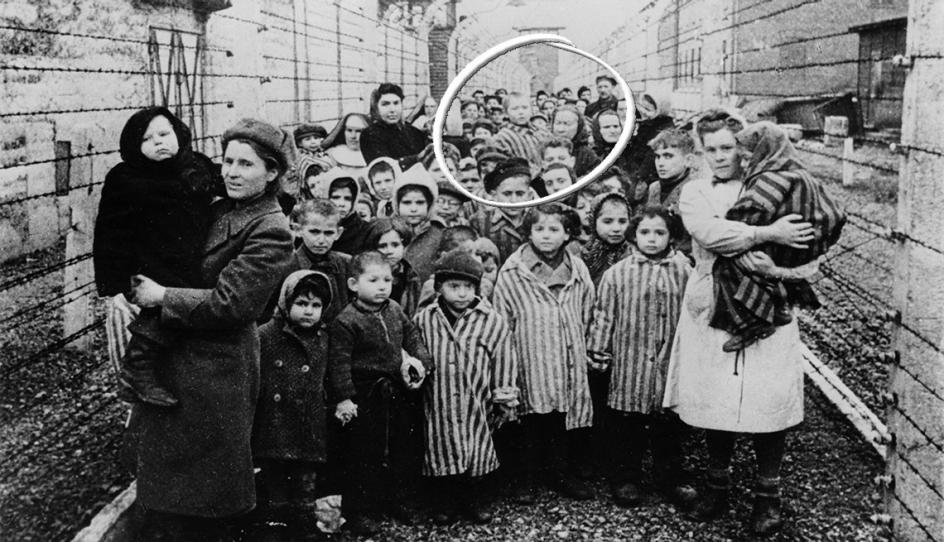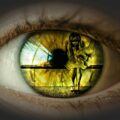
Workshop
I was 4 years old and in Auschwitz I was B1148

Michael Bornstein is one of the 52 Hebrew children who survived the extermination camp. “If I were face to face with a Nazi, I would tell him that evil hasn’t won”.
We will be the last generation that will hear their stories and will shake their hand. Being in front of Michael Bornstein means giving a face, a pair of eyes, a voice to the horror of the holocaust. His four years are immortalized by a black and white photo, in which Michael is in a striped pajama at the gates of Auschwitz.
Among the 52 Jewish children, under the age of 8 years who survived the extermination camp, is also him. He passed most of his time as a prisoner in the women’s department, with his mother and grandmother, who tried protecting him from the Nazi patrols. He remembers little of the invasion of Poland, where he was born. “I am getting old, and so I keep forgetting”, he gently says. But that memory of the Zarki ghetto, his native city where he and his family were transferred to, is vivid. In the month of May 1944, they were put on a cattle wagon which was headed to Auschwitz. His mother, father, brother and grandmother were his travel companions till their arrival when his father and his 9-year-old brother were confined to the men’s section. Michael regrets not being able to remember them if not through photographs. They did not leave the camp alive. They were killed in the gas chambers. “We were many children, and we slept in a ward where the beds were hardwood bunks and the food was very little. We were all dying of hunger”, he recalls. His mother, Sophie, despite receiving constant beatings for her actions, would always manage to sneak into his ward, to give him her bread. Though, when she realized that the older children kept stealing it from him, she decided to take her son to the women’s section. “I learned to stay silent and calm, hidden in my mother’s bunk for the whole day, till she was transferred to another camp in Austria to prepare ammunition. And my grandmother, Dora took her place, but to survive I would eat leftover food in the bin, even the potato peels”. In these stages, the memories are vivid. When in the winter between 1944 and 1945 the Nazi, alarmed by the advances of the Russian troops, idealized the so-called “death marches” – that was the forced transferring of the concentration camp prisoners to prevent being discovered or to use them in a possible peace treaty – the grandmother realizes that the child, who was already sick, would not survive the journey and takes him to the infirmary. “The Nazi were terrified by the germs and did not enter. We saved ourselves like that. It was a miracle”. Memories overlap with Grandma Dora’s stories in the words of this 80-year-old man. After the war, he and his grandmother returned to their city, but their house was occupied by other Polish people and hence it was too small to house them for several months, till his mother returned from Austria.
For 75 years, Michael never spoke about his story. One day, together with his daughter, while searching for a 1945 film where he had been immortalized, they came across various sites of Holocaust deniers. “In those posts they said that the camps never existed, or they weren’t that bad, because in the photos taken, they didn’t see us as undernourished. The Russians had fed us for a fortnight before retreating”, Michael narrates vigorously. Till today, not a crumb remains in his plate, in memory of those days. And when he enters the metro of New York, the memories of the wagon to Auschwitz flood in. Seeing, then, that many of the survivors were dying, Michael decided to make his story public, that of the B1148 prisoner. That number tattooed on his arm and that, as a child he showed in the historic documentary, speaks without words. He hid that number for decades under his shirts. That number isolated him from other children, refugees like him, in a camp near Munich for five years. “I had lost my hair for the malnutrition and then, I did not speak German and hence all would keep a distance. I was invisible, just as my first months in the USA”, he narrates. It is the month of February 1951, when I get my visa for the United States. Michael is ten years old and with his mother, Sophie, they embark for New York. They slept for months on a mattress in the aunt’s hall, before they managed to have a small apartment in the Hispanic area of Harlem. He worked for 25 cents an hour in a pharmacy, delivering medicines and cleaning the premises to help his mother, reinvented herself as a seamstress. Amidst the stills, terracotta pots and balances, Michael developed a passion for pharmacy and chemistry and earned a doctorate that led him to work for leading companies such as Johnson and Johnson. If he thinks of the maternal inheritance, he underlines two words: education and optimism. “Education, education, education was my chorus”, he explains, showing a watch with some alphabets in Hebrew engraved in it that read: “Even this will pass”. It was Sophie’s gift to her son, that encouraged him to look towards the future, the positive, even in the darkest of days. The train to Auschwitz, the camp, the aftermath of the liberation were frightful, but if he were to find himself face to face with a Nazi, he would want him to know that evil, the hatred and fanaticism did not win. “The best revenge is to show them that I am living a life full of happiness. I am married from 54 years; I have four children and 12 marvelous grandchildren”.
Article made possible also thanks to the historical work of Maddie Kramer.






